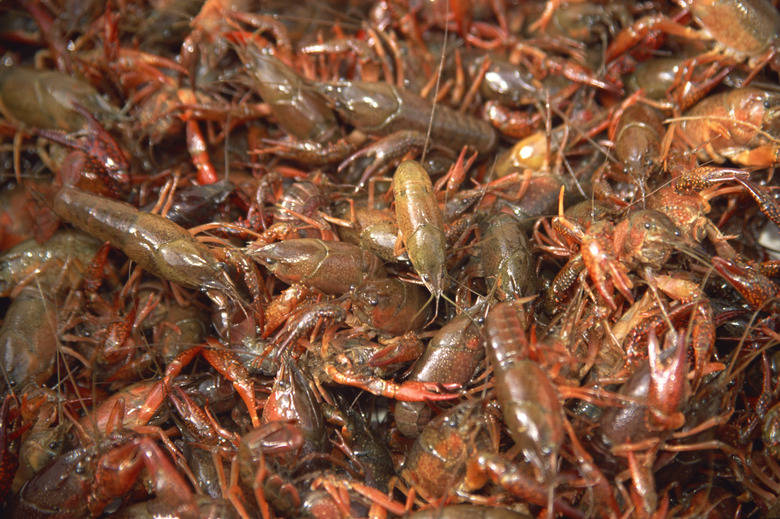Adaptations Of The Crawfish
Crawfish, also called crawdad and crayfish, are members of the crustacean family closely related to lobsters, shrimp and crabs. These small invertebrates commonly live in fresh water but can also be found in brackish salty waters. Crawfish are used as fish bait or can be eaten once cooked. The crawfish has many adaptions that help it survive and find food.
Eyes and Antennae
Eyes and Antennae
The eyes of the crawfish are located on the tops of short stalks. These stalks rotate, allowing the crawfish a larger field of view to spot predators and prey. However, many times crawfish live in muddy and murky waters where visibility is very low. The crawfish also has antennae, which are long appendages, and antennules, which are shorter, to feel for prey and to detect predators in the environment.
Coloration
Coloration
The color of the crawfish depends on the species of crawfish and the environment in which it lives. The crawfish's exoskeleton, which is the protective shell of the animal, color matches to the environment where it lives. This makes it more difficult to find the crawfish, which protects it from predators and camouflages it when it comes time to find prey.
Molting
Molting
As the crawfish grows, it goes through roughly 11 molts, according to J.V. Hunter and J.E. Barr of Southern University and the Louisiana Department of Education. Molting is the process of shedding an exoskeleton that is too small. The molting process requires the old exoskeleton to soften. The calcium in the shell is absorbed by the crawfish in special glands in its head. Once the molt occurs, which only takes a few seconds, the calcium stored is used to create the new exoskeleton.
Chemical Signals
Chemical Signals
Another adaption of the crawfish is the use of chemical signals. These signals are used to recognize one another and used to trigger mating. Crawfish usually mate in late summer and early fall, typically low water times of the year. Commercial producers of crawfish use this feature as a means to trigger breeding in their population by lowering the water level in their holding ponds.
Gills
Gills
The crawfish spends its entire life in water, and so uses gills to breathe. The gills of the crawfish are located under the carapice, part of the exoskeleton. This adaption keeps very sensitive and vulnerable area of the gills protected at all times from predators and potential injury.
Cite This Article
MLA
Carpenter, Michael E. "Adaptations Of The Crawfish" sciencing.com, https://www.sciencing.com/adaptations-crawfish-10006220/. 24 April 2017.
APA
Carpenter, Michael E. (2017, April 24). Adaptations Of The Crawfish. sciencing.com. Retrieved from https://www.sciencing.com/adaptations-crawfish-10006220/
Chicago
Carpenter, Michael E. Adaptations Of The Crawfish last modified March 24, 2022. https://www.sciencing.com/adaptations-crawfish-10006220/
